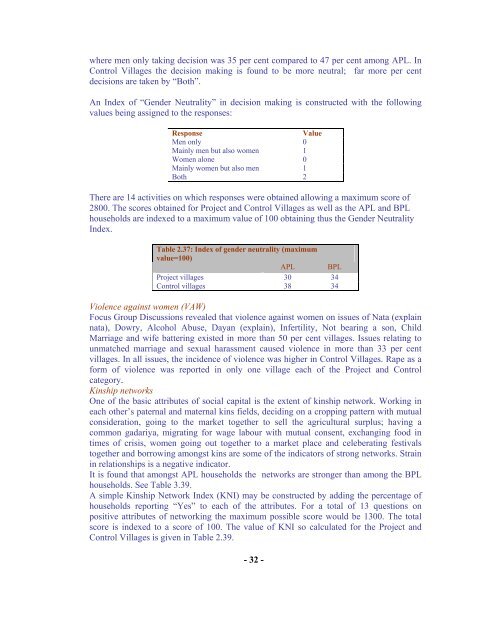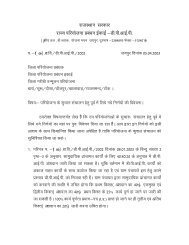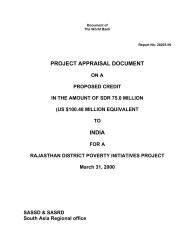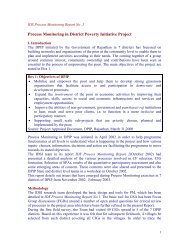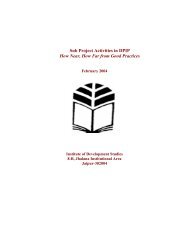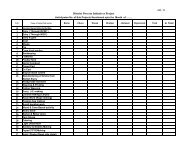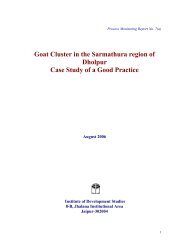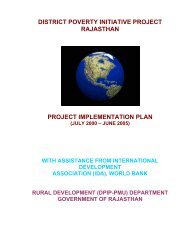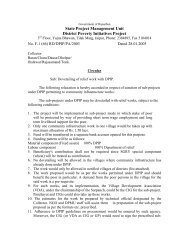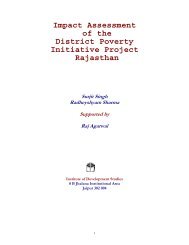Download PDF - Rajasthan Rural Livelihoods Project
Download PDF - Rajasthan Rural Livelihoods Project
Download PDF - Rajasthan Rural Livelihoods Project
Create successful ePaper yourself
Turn your PDF publications into a flip-book with our unique Google optimized e-Paper software.
where men only taking decision was 35 per cent compared to 47 per cent among APL. InControl Villages the decision making is found to be more neutral; far more per centdecisions are taken by “Both”.An Index of “Gender Neutrality” in decision making is constructed with the followingvalues being assigned to the responses:ResponseValueMen only 0Mainly men but also women 1Women alone 0Mainly women but also men 1Both 2There are 14 activities on which responses were obtained allowing a maximum score of2800. The scores obtained for <strong>Project</strong> and Control Villages as well as the APL and BPLhouseholds are indexed to a maximum value of 100 obtaining thus the Gender NeutralityIndex.Table 2.37: Index of gender neutrality (maximumvalue=100)APL BPL<strong>Project</strong> villages 30 34Control villages 38 34Violence against women (VAW)Focus Group Discussions revealed that violence against women on issues of Nata (explainnata), Dowry, Alcohol Abuse, Dayan (explain), Infertility, Not bearing a son, ChildMarriage and wife battering existed in more than 50 per cent villages. Issues relating tounmatched marriage and sexual harassment caused violence in more than 33 per centvillages. In all issues, the incidence of violence was higher in Control Villages. Rape as aform of violence was reported in only one village each of the <strong>Project</strong> and Controlcategory.Kinship networksOne of the basic attributes of social capital is the extent of kinship network. Working ineach other’s paternal and maternal kins fields, deciding on a cropping pattern with mutualconsideration, going to the market together to sell the agricultural surplus; having acommon gadariya, migrating for wage labour with mutual consent, exchanging food intimes of crisis, women going out together to a market place and celeberating festivalstogether and borrowing amongst kins are some of the indicators of strong networks. Strainin relationships is a negative indicator.It is found that amongst APL households the networks are stronger than among the BPLhouseholds. See Table 3.39.A simple Kinship Network Index (KNI) may be constructed by adding the percentage ofhouseholds reporting “Yes” to each of the attributes. For a total of 13 questions onpositive attributes of networking the maximum possible score would be 1300. The totalscore is indexed to a score of 100. The value of KNI so calculated for the <strong>Project</strong> andControl Villages is given in Table 2.39.- 32 -


